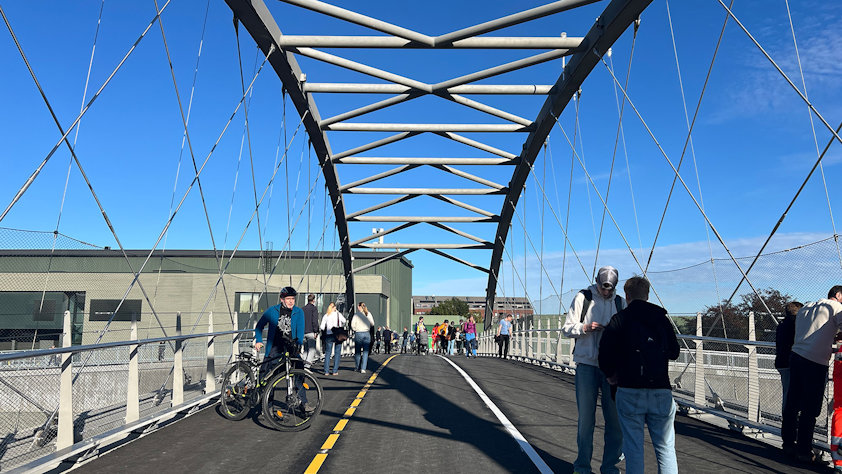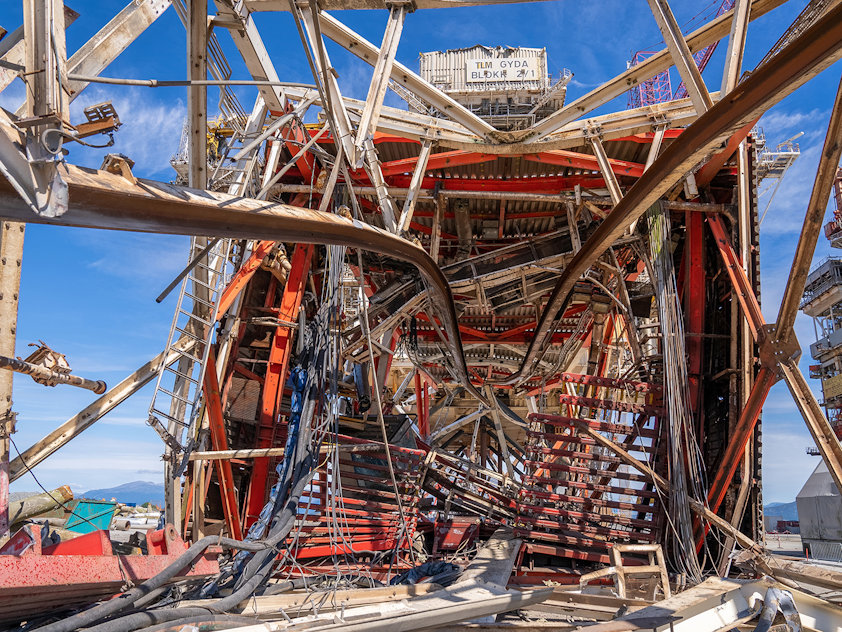“Hangarbrua” is a 55 meter long and 9 meter wide network arch bridge, constructed entirely from recycled aluminium and weighs 60 tonnes. The relatively low weight allowed for the bridge to be assembled off site before being lifted into place.
“This project shows how aluminium can be a key material for the bridges of tomorrow and a testament to the innovation and collaboration of all the partners involved," says Trond Furu, Vice President of Research and Innovation at Hydro.
Cutting emissions with recycled aluminium
A life cycle assessment by international consulting group COWI finds that using recycled post-consumer aluminium scrap reduces CO2e emissions by 70 percent compared to a stainless steel alternative, including the recycling potential after end of life.
The official opening of the bridge on September 30 is hosted by the Norwegian Public Roads Administration, which commissioned the bridge as a pilot project to gain valuable experience for future aluminium constructions. The bridge is built by Leirvik AS, who has extensive experience with building large aluminium constructions for offshore applications.
“Our long-term customer Leirvik saw the opportunity to reuse the old aluminium for the bridge project, so we jumped on it and transported the scrap to our recycling facility in Sweden. After remelting the aluminium, we produced new profiles for the bridge. Partnership is the key to circularity, turning used materials into new products,” says Thomas B. Svendsen, Business Development and Sustainability Manager in Hydro Extrusions.

Built to last
The Hangarbrua project marks a milestone in circular construction, demonstrating how waste can be transformed into a durable and valuable building material. The bridge deck is made from 20 tonnes of aluminium sourced from the Gyda oil platform, which was in operation in the North Sea from 1990 to 2021. Following the platform's dismantling by Aker Solutions, the aluminium scrap was sorted by Stena Recycling before being delivered to Hydro.

Hydro recycled the aluminium scrap and produced new extruded profiles for the bridge. The recycling and production happened at Hydro’s plants in Sweden. The bridge's elements, some of which were joined using Friction Stir Welding, were then delivered to Leirvik AS for final assembly.
Due to aluminium’s natural resistance to corrosion and its durability, the bridge is expected to require minimal maintenance over its lifetime, helping reduce long-term costs and disruptions to train traffic. The bridge is a crucial part of Trondheim’s new bicycle route, connecting the main pedestrian and bicycle road to the city center, and supporting the city's rapid urban development.
About the Hangarbrua bridge project
Leirvik AS designed the bridge in collaboration with COWI and partnered with Hydro, Aker Solutions and Stena for the recycled bridge deck. The Norwegian Public Roads Administration collaborates closely with independent research organisation SINTEF and Norwegian University of Science and Technology (NTNU), as a partner in the SFI Physmet research centre. Winsnes AS executed the groundworks.
Equipped with numerous sensors to monitor structural behaviour, the bridge will generate valuable data to enhance understanding of aluminium as a structural material. These insights may contribute to the development of design standards for future aluminium bridges.
Published: September 30, 2025

